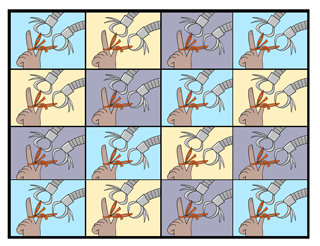Repetition

What do McDonald’s, Nike, and Maybelline have in common? Upon first glance, it doesn’t seem like they share much at all. McDonald’s is famous for food, Nike makes athletic clothing, and Maybelline produces makeup. However, these three companies all have memorable slogans. It is hard to go a day without hearing McDonald’s familiar “I’m lovin’ it” jingle. Nike has branded clothing with their “Just do it.” tagline and Maybelline employs attractive celebrities to say “Maybe she’s born with it, maybe it’s Maybelline.”
Whenever we hear these slogans and taglines, we are encouraged to link the jingle to our feelings about the brand. McDonald’s catchy jingle reminds us that their food is lovable and brings back feelings of nostalgia. Nike’s slogan encapsulates the drive and desire of an athlete and suggests that their clothing will help the athlete achieve her goals. Finally, Maybelline’s memorable tagline suggests that their makeup will leave the user with a naturally flawless look. Hearing these slogans again and again makes this form of advertising so effective.
Advertising agencies are not the only ones who utilize the tactic of repetition. Propagandists use repetition to link themes to certain groups or ideas. In the same way that Nike repeatedly associates their brand with the relentless dedication of an athlete, propagandists relate negative themes to their opponents and positive themes to members of their group. Social scientists Christopher Paul and Miriam Matthews state, “repetition leads to familiarity and familiarity leads to acceptance.”1 When audiences are repeatedly exposed to a short slogan or tagline, they are encouraged to accept these themes and associate them with the targeted ideas or groups.
Propagandists use repetition to prevent further discussion when convincing members of their group that the opposing side cannot think rationally. For example, there are many jokes about blondes being dumb. The famous actress Marilyn Monroe, for example, always played the role of the dumb blonde, even though she was quite smart. In an interview with the Christian Science Monitor, author Sarah Churchill said, “She [Marilyn Monroe] was far from dumb… The dumb blonde was a role – she was an actress for heaven’s sake! Such a good actress that no one now believes she was anything but what she portrayed on screen.”
Monroe was consistently cast as the dumb blonde, leading people to accept that she was dumb off-screen. Just as casting agents consistently chose Monroe to play the role of the dumb blonde, propagandists can use repetition to reinforce unfounded and irrational claims. After hearing these ideas repeated, we begin to accept them as truth.
When we notice the repetition of a particular message or claim, we can protect ourselves by asking the following questions:
- If we boil the claim down to its essential elements, what does the propagandist want us to believe?
- Why might the sender of this message want us to accept this claim?
- Is it reasonable to accept this claim based on factual evidence?
References
1 Christopher Paul and Miriam Matthews (2016) “The Russian firehose of falsehood propaganda model,” Perspective: RAND Corporation. p. 4.
